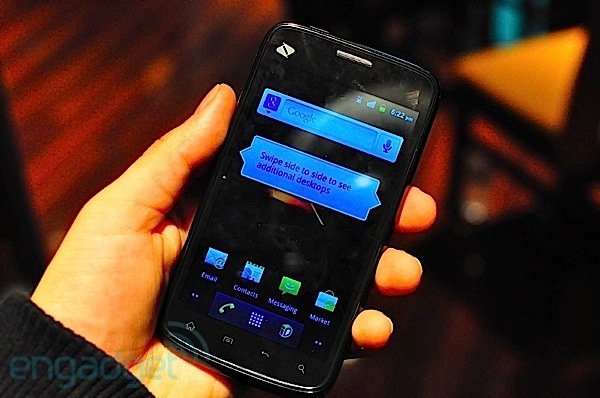Smartphone Design: Are Modern Phones Too Boring?

Smartphone design has become a hot topic in recent years as consumers grapple with a sense of stagnation in smartphone innovation. As technology evolves, users are increasingly voicing their frustrations over the uniformity seen in modern smartphone features, expressing that many devices have become indistinguishable from one another. From oversized screens to minimalistic aesthetics, it appears that the charm of unique smartphone design has been sidelined in favor of a sleek, boring approach, leaving room for emerging smartphone trends to be overshadowed. In a world where we spend over $1000 on these devices, it raises the question: is it too much to ask for a little creativity in smartphone design? With advancements few and far between, it is evident that many users are yearning for a revival in the art of design rather than merely focusing on hardware upgrades.
The debate surrounding current mobile phone aesthetics reveals a significant discomfort with the lack of variety and creativity in handheld device designs. Many tech enthusiasts argue that today’s gadgets resemble soulless rectangles, reflecting a distressing uniformity that stifles excitement. As the market experiences shifts, some consumers are starting to seek out smartphones that break from the norm of contemporary designs, celebrating unique features and innovative trends that stand out. Interestingly, the conversation extends beyond just looks—it’s about functionality and the overall user experience that has been compromised over time. Ultimately, the evolution of smartphone characteristics is crucial, as users wish to see more than just incremental upgrades; they want a reinvigorated sense of identity in their devices.
The Current State of Smartphone Design
In the contemporary smartphone market, many users express dissatisfaction with the monotony of modern smartphone design. Each new model released often resembles the last, leading to the perception that smartphones today are nearly indistinguishable. With a design focus that prioritizes functionality over innovation, manufacturers are increasingly criticized for lacking creative flair. This aesthetic similarity results in a market filled with ‘boring smartphones’ that fail to excite consumers, whose tech-savvy over the years has led them to yearn for designs that inspire awe and enthusiasm.
Simultaneously, while hardware advancements continue to emerge, the external appearance of smartphones has largely stagnated. The trend towards larger screens has indeed made design more challenging, yet this difficulty should not excuse the uninspired designs that have emerged. Consumers are willing to invest significantly in smartphones—often exceeding $1000—yet are met with devices that lack uniqueness and character. This lack of differentiation raises questions about the urgency of innovation in smartphone aesthetics, which could breathe new life into a market that many deem stale.
Innovation vs. Practicality in Modern Smartphones
The ongoing debate regarding whether today’s smartphones should prioritize innovation or practicality is a complex one. Some users, like Jason, appreciate practicality above all, arguing that reliability and functionality are what matter most. However, this alignment with functionality often seems to undermine the potential for innovative designs. Many feel that manufacturers have wedded themselves to the comfortable format of a sleek, flat slab, dismissing opportunities for creative expression in modern smartphone design. As a result, innovation appears to favor internal upgrades over external aesthetics, leaving consumers somewhat uninspired.
On the flip side, a desire for more creative designs persists among many consumers who see potential in the marriage of innovation and practicality. A perfect smartphone would combine both these aspects—utilizing modern materials and engineering to not only enhance usability but also to create exciting visual designs. The disconnect lies in the manufacturers’ hesitance to pursue bold designs, largely due to risk aversion fostered by market trends focused on brand loyalty and safety over adventurous designs. Thus, the innovation that began smartphone development appears to be at a standstill, raising concerns about the future trajectory of smartphone design.
Identifying Smartphone Trends: What’s Next?
Identifying relevant smartphone trends is crucial for understanding where the industry might head next. A recurrent theme among consumer discussions is the notion that ‘boring smartphones’ are no longer satisfying tech enthusiasts. There is an emerging demand for novelty and standout features that capture consumer attention beyond just specifications. With competitors underwhelming in their releases, the opportunity exists for trailblazers willing to challenge the status quo by introducing more visually striking models and innovative functionalities.
As manufacturers begin to recognize the shifting desires of consumers, we may witness a renewed focus on not just technological advancements but also aesthetic diversity. This shift could potentially lead to the reemergence of unique design features and customizable options that allow individuals to express their personality through their devices. Future smartphone trends may well prioritize an artistic design coupled with technological ingenuity, steering away from a narrative centered solely around performance metrics such as battery life, camera quality, and processor speed.
The Impact of Brand Loyalty on Smartphone Design
In a world where brand loyalty greatly influences consumer choices, the current smartphone design landscape is undeniably affected by this factor. Loyal customers often prioritize their affinity for a particular brand over the actual aesthetic qualities of a phone, which can stifle creative design initiatives from manufacturers. This loyalty has led to a saturated market where designs tend to mimic previous models instead of introducing new and exciting changes. The result is a lineup of smartphones that appear mundane, driven by fear of alienating devoted users.
Moreover, this ongoing trend of sameness contributes to a cycle of disinterest among potential customers. Those who may be inclined to explore different brands often find themselves dissuaded by the similarity in design among offerings. Consequently, as manufacturers cater to brand loyalists and their predictable preferences, the broader smartphone design landscape is left devoid of innovation and excitement. The call for a shift in this paradigm becomes stronger, as tech enthusiasts advocate for brands to venture beyond comfort zones and produce smartphones that not only excel in features but also ignite passion through creative design.
The Role of Consumer Feedback in Smartphone Innovations
Consumer feedback plays a pivotal role in shaping future smartphone innovations and designs. As frustrated users voice their opinions on the current state of smartphones, manufacturers have the opportunity to glean insights that could lead to transformative changes. The resonance of online discussions showcases a collective desire for features that align with user experiences, potentially guiding companies to move beyond the uninspired design ethos that dominates today’s smartphones.
Manufacturers who actively engage with user feedback may discover a plethora of ideas and preferences that are not only overlooked but could revive interest in the smartphone market. Embracing this input can result in adaptive designs that incorporate unique attributes and functionality desired by consumers. Ultimately, understanding this sentiment can create a positive feedback loop that fosters a new wave of engaging, innovative designs that resonate deeply with users, and reignites excitement in the smartphone landscape.
Challenges in Creating Unique Smartphone Features
The challenge of creating unique smartphone features stems from the overwhelming focus on standardization within the industry. With many manufacturers vying for incremental improvements rather than revolutionary upgrades, distinct features often fall by the wayside. This trend has left consumers feeling limited by the lack of differentiation among modern devices. Furthermore, as manufacturers worry about competition and market share, there has been a tendency to play it safe, leading to a homogenous array of smartphone designs and functionalities.
On the other hand, this challenge could also be viewed as an opportunity for innovation. Companies willing to leverage emerging technologies, such as AI, AR, and even foldable displays, have the chance to redefine the smartphone experience through unique feature sets. Nevertheless, this pursuit requires bold vision and investment—qualities that many entrenched brands may lack as they cling to tried-and-tested formulas. As these challenges unfold, the response from manufacturers and adaptation to consumer demands will ultimately dictate the future trajectory of smartphone design and features.
The Future of Smartphone Aesthetics
Looking ahead, the future of smartphone aesthetics may hinge on a balance between form and function. As technology improves and consumer preferences evolve, we can expect a potential renaissance in smartphone design that marries innovative hardware with visually appealing aesthetics. The demand for durable yet stylish smartphones could push manufacturers to experiment with material usage, colors, and even artistic methods in crafting devices that not only serve practical needs but are also visually captivating.
Additionally, the push towards sustainability in product design may further illuminate the path toward innovative smartphone aesthetics. As consumers start to value eco-friendliness, manufacturers could explore new environmentally friendly materials and production methods that diverge from conventional design approaches. This embrace of aesthetics centered on sustainability could usher in an era where smartphone users celebrate not just the device’s functionality, but also its commitment to environmental stewardship, leading to a wave of inspired modern smartphone design.
Exploring Foldable and Innovative Smartphone Designs
Foldable and innovative smartphone designs represent a hallmark of the latest trends aimed at breaking the monotony experienced in recent years. Manufacturers are beginning to experiment with versatile designs, creating devices that transform the traditional smartphone experience by allowing users to expand screens or explore new interactive interfaces. Such innovations offer tantalizing glimpses of what the smartphone of tomorrow can look like, reinvigorating consumer enthusiasm and encouraging users to envision their devices in new ways.
These advanced designs challenge the notion that smartphones must adhere to standard rectangular shapes, instead encouraging bold creativity. The flexibility offered by foldable phones not only appeals to aesthetics but also serves practicality, providing larger displays without compromising portability. As competition heightens among brands to produce these multifunctional devices, the future may not only be about enhanced performance but also about innovative designs that redefine the user experience in exciting and meaningful ways.
Consumer Demand for Practical Smartphone Solutions
In light of the ongoing debates regarding smartphone design, consumer demand for practical solutions grows more urgent. Users are increasingly vocal about their needs for durable and functional devices that can withstand everyday challenges, moving beyond the superficial allure of aesthetics. This resonates with many who advocate for practical features, such as enhanced durability and functionality, as opposed to focusing solely on innovative designs that may not serve real-world applications.
As companies strategize to meet consumer expectations, the message is clear: practicality should not be sacrificed at the altar of design. The incorporation of protective features and enhanced usability should go hand in hand with aesthetically pleasing designs. Smart manufacturers who take heed of this shift will not only satisfy existing customer bases but also attract a wider audience, eager for devices that champion both beauty and utility. The evolving landscape necessitates a comprehensive approach to smartphone design that embraces consumer demands for practicality without losing sight of creativity.
Frequently Asked Questions
What are the current trends in smartphone design and innovation?
Current trends in smartphone design focus on minimalism and functionality, often leading to devices that resemble each other. Manufacturers are exploring foldable and flexible displays to offer unique features, while advancements in materials and build quality are becoming key aspects of modern smartphone design.
Are today’s smartphones becoming boring due to design uniformity?
Many users believe that today’s smartphones are becoming boring due to design uniformity, as most devices share similar features and aesthetics. With the prevalence of all-screen designs and the elimination of unique elements, consumers feel that innovation in smartphone design has plateaued.
How does smartphone innovation impact user experience?
Smartphone innovation significantly impacts user experience by continuously improving performance, camera capabilities, and software features. However, limited design diversity can detract from the overall excitement, as users seek both advanced functionality and aesthetically diverse smartphone designs.
What role do smartphone features play in the debate about boring smartphone designs?
The features of a smartphone, such as camera quality, battery life, and software enhancements, play a crucial role in offsetting the perception of boring designs. While these features can provide a functional advantage, the lack of visual variety in smartphone design may leave some users feeling less engaged with their devices.
Can we expect any radical changes in modern smartphone design soon?
While there are ongoing discussions about the need for radical changes in modern smartphone design, true innovation often takes time. Manufacturers are gradually experimenting with new designs, such as foldable screens and modular components, but significant shifts in the aesthetic layout may still be on the horizon.
Why are smartphone manufacturers often criticized for boring designs?
Smartphone manufacturers face criticism for boring designs because many devices appear similar, prioritizing form factors that maximize screen real estate over creative aesthetics. This lack of variety and a perceived reduction in innovation have left consumers yearning for more distinctive smartphone designs.
How have smartphone trends influenced consumer expectations in design?
Smartphone trends heavily influence consumer expectations by setting standards for what constitutes a modern device. As sleek, all-screen designs become commonplace, consumers expect not only performance but also unique and innovative designs that reflect their individuality and lifestyle preferences.
| Aspect | Viewpoints |
|---|---|
| Design Stagnation | Many users feel that all smartphones look the same and lack unique design elements. |
| Practicality vs. Aesthetics | Some users prioritize functionality over an innovative design, indicating a flat screen limits creativity. |
| Material Changes | Transitioning from sturdier materials to lighter ones has sometimes compromised quality for gimmicky features. |
| Consumer Indifference | Brand loyalty has led to apathy regarding the lack of unique features in modern smartphones. |
| Desire for Innovation | Consumers express a longing for creativity and practicality that was more prevalent in earlier smartphone designs. |
Summary
Smartphone design has reached a point where many users consider it to be stagnant and uninspiring. As technology continues to progress internally, the outer aesthetics of smartphones have unfortunately remained quite uniform. Most manufacturers focus on functionality, which leaves little room for creative designs, leading to a sentiment of boredom among consumers. To re-ignite interest in smartphone design, brands should innovate not only in hardware advancements but also in unique and engaging outer designs. This could bring back the excitement that once characterized the smartphone evolution.
Introducing Autowp, the ultimate AI content generator and AI content creator plugin for WordPress, designed to elevate your content strategy effortlessly. With Autowp, you can create engaging articles, blog posts, and web pages in seconds, harnessing the power of advanced artificial intelligence to enhance your writing process and boost SEO performance. Whether you’re a seasoned blogger or a new website owner, this plugin makes it easy to generate high-quality content that resonates with your audience. To remove this promotional paragraph, upgrade to Autowp Premium membership.




